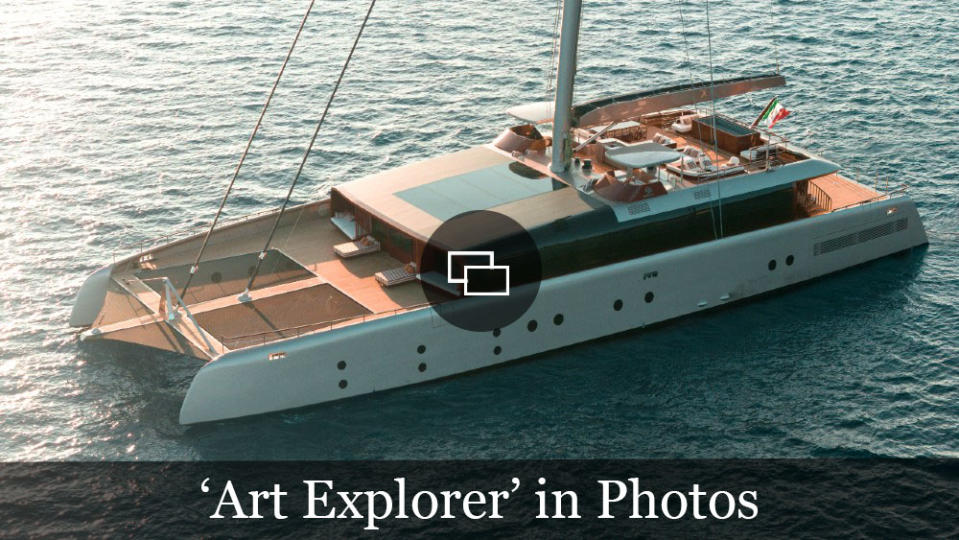Boat of the Week: This 153-Foot Catamaran Is a Traveling Art Exhibition for the High Seas
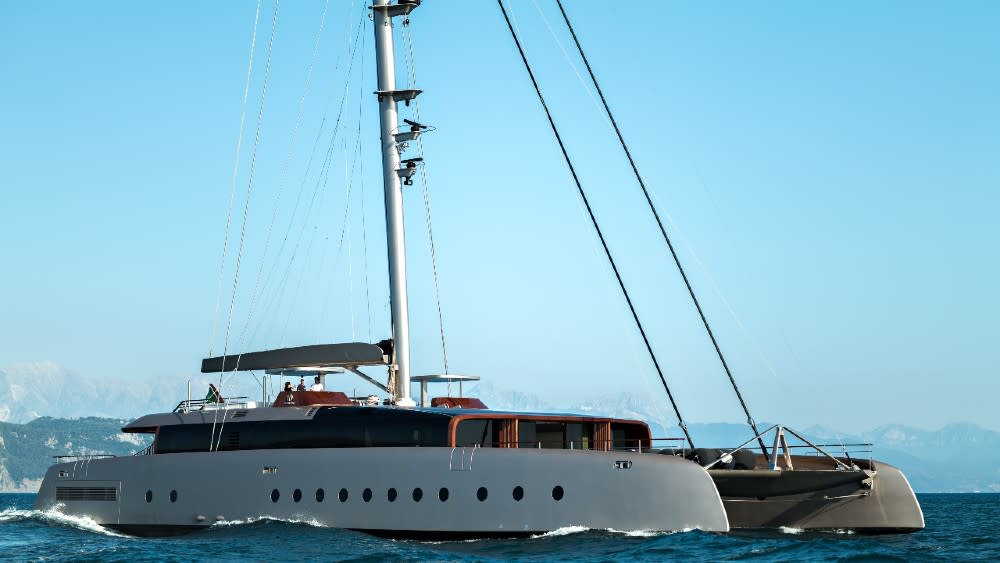
Frédéric Jousset’s 153-foot Art Explorer is the world’s largest aluminum sailing catamaran, yet that’s not what excites him. The French entrepreneur commissioned the custom-built Perini Navi to realize his dream of democratizing the arts. The multihull will sail the Mediterranean and French Antilles to bring free immersive exhibitions to thousands of visitors, while also straddling the divide between charter yacht and floating gallery.
Art Explorer is Jousset’s first new-build yacht. His own charter experiences shaped his ideas for the boat. “It had to be a sailing yacht because you can’t promote culture at the detriment of the environment,” Jousset told Robb Report following a tour of the vessel at the Monaco Yacht Show. “I wanted something that was super-efficient in terms of fuel consumption, under 500 GT and with six cabins for charter, because there’s a market for that.”
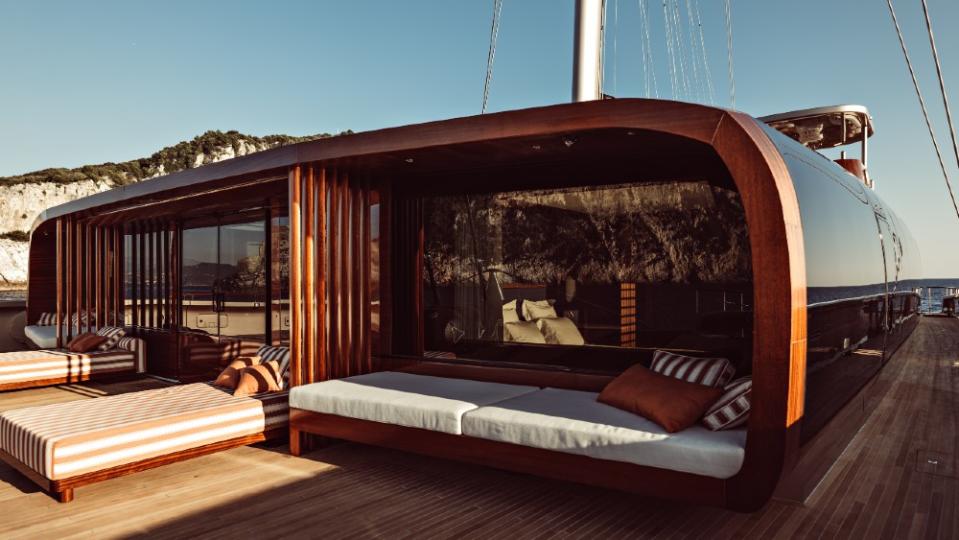
The 180-foot mast and a fully automated sail plan that can be operated by a single person mean Art Explorer can reach 10 knots, even in low wind conditions. Jousset also figured a catamaran was the best platform for several reasons. Its shallow draft provides greater access to small ports. Its 57-foot beam, offering almost 7,500 square feet of interior space. And the three-foot-wide staircase means that the 2,000 daily visitors he expects to see the art gallery can be comfortably accommodated.
More from Robb Report
The Secret to Making the Best-Tasting Eggnog: A Robb Report Recipe
A Ducati Diavel and Bentley Batur Just Had a Baby, and It's a New Limited-Edition 168 HP Bike
This $43 Million Seaside Stunner in SoCal Has Rooftop Deck With a Putting Green and a Pool
“I also love how far apart the hulls are,” says Jousset. “The yacht’s fitted with zero-speed stabilizers, though the platform is so stable you barely need them.”
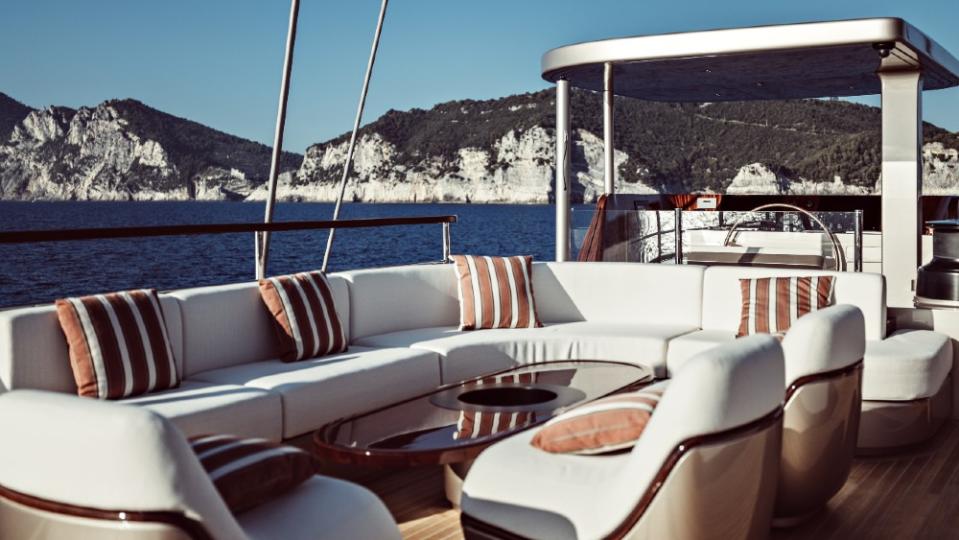
The interior and exterior design comes from Axel de Beaufort, design and engineering director for Hermès Horizons (a division of the famed fashion house Hermès) and naval architect Guillaume Verdier, who collaborated with Emirates Team New Zealand for the America’s Cup on an earlier multihull raceboat design.
“The design drew considerably from my offshore experiences and working closely with Guillaume,” says de Beaufort. “We crafted a boat that marries performance and functionality.”
Teak is used across the exterior areas, including the decks and cladding. Inside is a mix of mahogany and white accents where supple leather and soft furnishings contrast with the dark, rich tones of the wood.
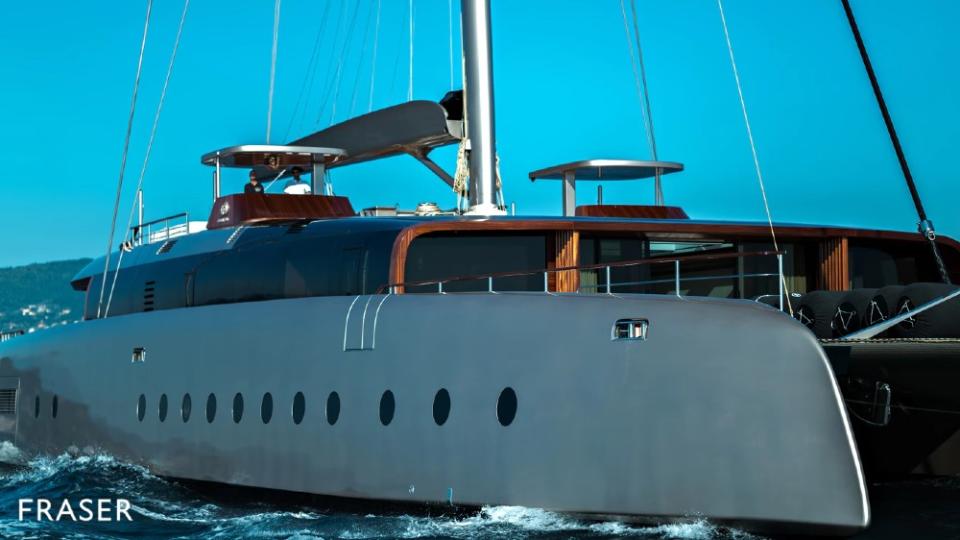
When in charter mode, the main salon and dining area provide a large open-plan space for socializing. On one side, a library sits concealed behind a mirror. On the other, an open cocktail bar invites guests to help themselves. Four large skylights fill the area with natural light and are large enough to view the entire 180-foot mast from the comfort of the sofas.
All six guest cabins are located starboard side, including a compact main-deck master forward with ensuite and dressing room. The nine crew are accommodated portside, to separate service from guest areas. This includes the yacht’s chef who was trained by Michelin-starred Monégasque master Alain Ducasse. Adjacent to the master is a small pilothouse, yet this area is only used for monitoring the yacht’s systems rather than steering the vessel. The main helm is found on the flybridge, sheltered by a hardtop.

“Many sailing boats don’t often sail because it’s easier to turn the engines on, but I’ve directed the crew to hoist the sails at every opportunity,” says Jousset.
Sustainability was part of Jousset’s vision. The yacht has a “green” class notation, and all exhaust gases are fitted with catalytic filters to decrease emissions and particulate matter. Around 700 square feet of solar panels are installed on the roof of the deckhouse and produce 200 kW of energy daily. The system is backed up by a lithium battery bank which delivers six hours of silent cruising. All maneuvers in and out of harbor, as well as in protected areas, will be in full electric mode.
When in museum mode, the yacht will remain docked and the flybridge will be used for virtual exhibitions. Visitors will be blindfolded while listening to a 15-minute soundtrack that plays iconic sounds from the Mediterranean. The main salon (or gallery) will house digital wall panels showing a 15-minute movie called The Icons that will play on a continuous loop. Managed by Nomi Daucé, curator of archaeology at the Louvre Abu Dhabi, it tells the story of female artists through the ages. All loose furniture will be removed from the main salon to accommodate the digital exhibit.
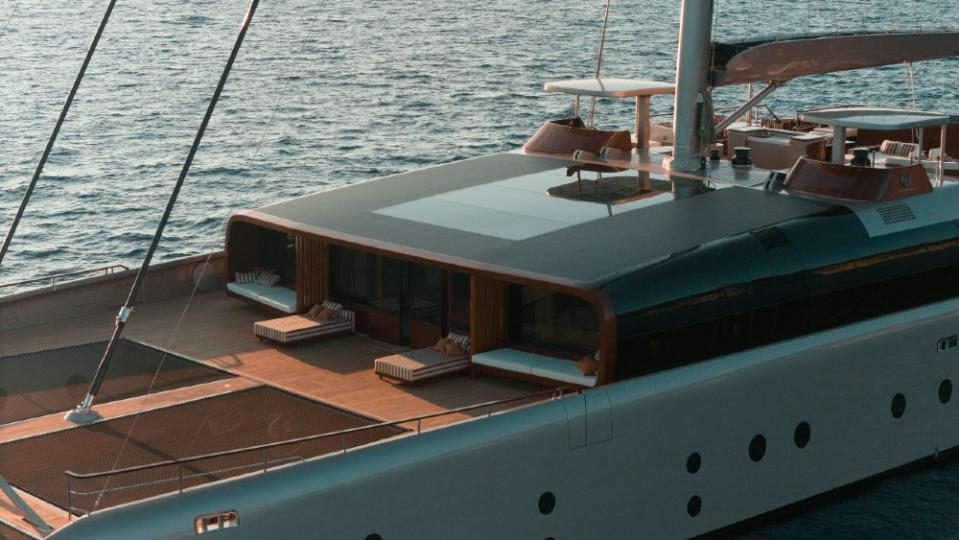
In addition, temporary land exhibits will be erected in front of the yacht. They will be dedicated to photography, paintings, sculpture, and 3-D-generated architecture, from the pyramids of Egypt to the Leptis Magna in Libya.
“Making the yacht available for charter will create streams of revenue that help us finance the art program,” says Jousset. “Having the exhibition on a superyacht is also honey for the bee, as some visitors will come for that reason alone and then become engaged with the art.”
Art Explorer will be available for charter with Fraser in 2024. Admission to the art exhibitions at other times will be free, thanks to the charter guests will be supporting the yacht’s philanthropic endeavors.
Click here for more photos of Art Explorer.
Best of Robb Report
Sign up for Robb Report's Newsletter. For the latest news, follow us on Facebook, Twitter, and Instagram.

